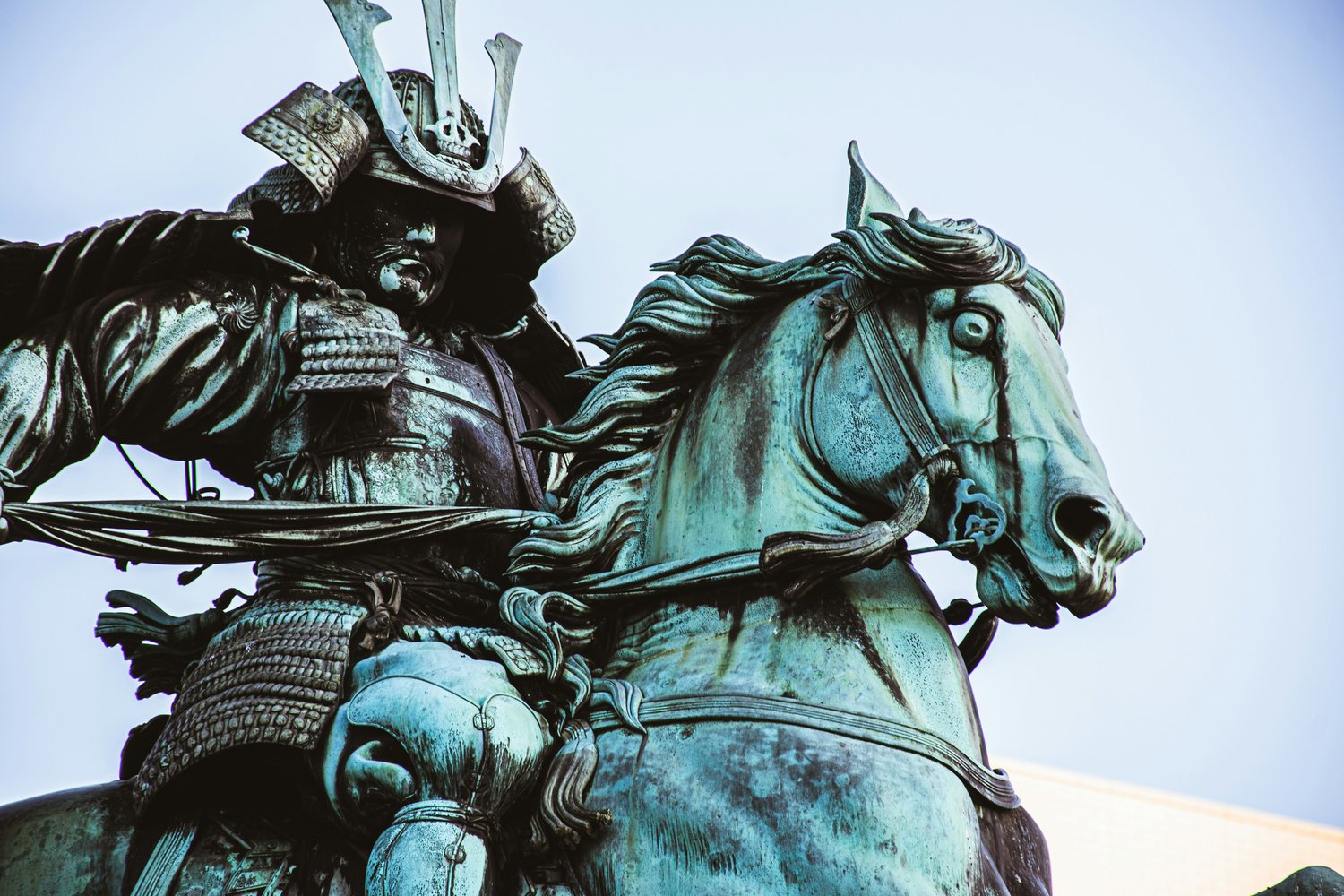Image: https://unsplash.com/photos/man-riding-horse-statue-during-daytime-ghABEDT41Bw
Samurai armor is a symbol of the rich history and culture of Japan’s warrior class. Over the centuries, this armor evolved significantly, reflecting changes in warfare, technology, and society. This article explores the evolution of samurai armor, highlighting who wore it and why.
Early Samurai Armor (Heian Period, 794-1185)
Who Wore It: In the Heian period, the early samurai were mounted archers who served the aristocracy. These warriors, known as bushi, were part of Japan’s elite class and played crucial roles in maintaining order and fighting in clan wars.
Why They Wore It: The primary purpose of armor during this period was to protect against arrows. The early samurai armor, called ō-yoroi, was designed to offer maximum protection while allowing mobility for horseback archery.
Design:
Materials: The ō-yoroi was made from leather and iron plates, lacquered to protect against rust and reinforced with silk or leather cords.
Components: Key elements included the kabuto (helmet), dō (cuirass), and sode (shoulder guards). The armor was bulky, providing ample protection to the upper body, especially from the back and sides.
The Rise of the Ashigaru and Lamellar Armor (Kamakura Period, 1185-1333)
Who Wore It: During the Kamakura period, the samurai class expanded, and foot soldiers known as ashigaru became more prominent. These infantrymen were crucial in large-scale battles, complementing the traditional mounted samurai.
Why They Wore It: As warfare evolved to include more foot soldiers and hand-to-hand combat, armor needed to be lighter and more versatile. The shift from primarily archery to more sword and spear combat influenced armor design.
Design:
Materials: Lamellar armor made of small iron or leather plates laced together provided flexibility and decent protection.
Components: This period saw the development of the dō-maru, a more compact and less cumbersome version of the ō-yoroi, suitable for both mounted and foot soldiers.
The Sengoku Period: Innovations in Samurai Armor (1467-1603)
Who Wore It: The Sengoku period, or Warring States period, was marked by constant military conflict among competing feudal lords. Samurai from all ranks, including daimyō (feudal lords) and their retainers, wore armor suited for intense, prolonged battles.
Why They Wore It: The frequent and intense battles of the Sengoku period demanded more practical and effective armor. Innovations were necessary to protect against a wider range of weapons, including firearms introduced by European traders.
Design:
Materials: Enhanced with iron and steel, the armor became more resilient to gunfire and melee attacks.
Components: The haramaki and later the gusoku armor sets became popular. These were lighter, provided better mobility, and featured more sophisticated designs such as the iconic kabuto with elaborate crests and the menpo (face masks) with fierce expressions.
The Edo Period: The Decline and Ritualization of Armor (1603-1868)
Who Wore It: The Edo period was characterized by relative peace under the Tokugawa shogunate. Samurai continued to wear armor, but its role shifted from practical use in warfare to symbolic and ceremonial purposes.
Why They Wore It: With the establishment of peace, the need for functional armor diminished. Instead, armor became a symbol of status, heritage, and the samurai’s martial spirit.
Design:
Materials: While the materials remained similar, the craftsmanship became even more refined, with greater emphasis on aesthetics.
Components: Armor sets were often ornate, featuring elaborate decorations, gold inlays, and family crests. The kabuto and menpo were particularly lavish, used in processions and displays rather than battle.
Meiji Restoration and Beyond: The End of Samurai Armor (1868-Present)
Who Wore It: The Meiji Restoration marked the end of the samurai class and the abolition of their privileges, including the wearing of armor. The modernized Japanese army no longer used traditional samurai armor.
Why They Wore It: The transition to a modern military force meant that traditional armor became obsolete. However, samurai armor remained an important cultural artifact and symbol of Japan’s historical heritage.
Legacy:
Preservation: Many pieces of samurai armor are preserved in museums and collections, showcasing the artistry and craftsmanship of different periods.
Cultural Symbol: Samurai armor continues to symbolize the values of bravery, honor, and discipline. It is featured in cultural festivals, films, and artworks, preserving the legacy of the samurai.
Conclusion
The evolution of samurai armor reflects the dynamic history of Japan and its warrior class. From the early days of the Heian period to the ceremonial displays of the Edo period, each era’s armor design tells a story of adaptation and cultural significance. Although no longer worn in battle, samurai armor remains a powerful symbol of Japan’s rich martial heritage and the enduring spirit of the samurai.



